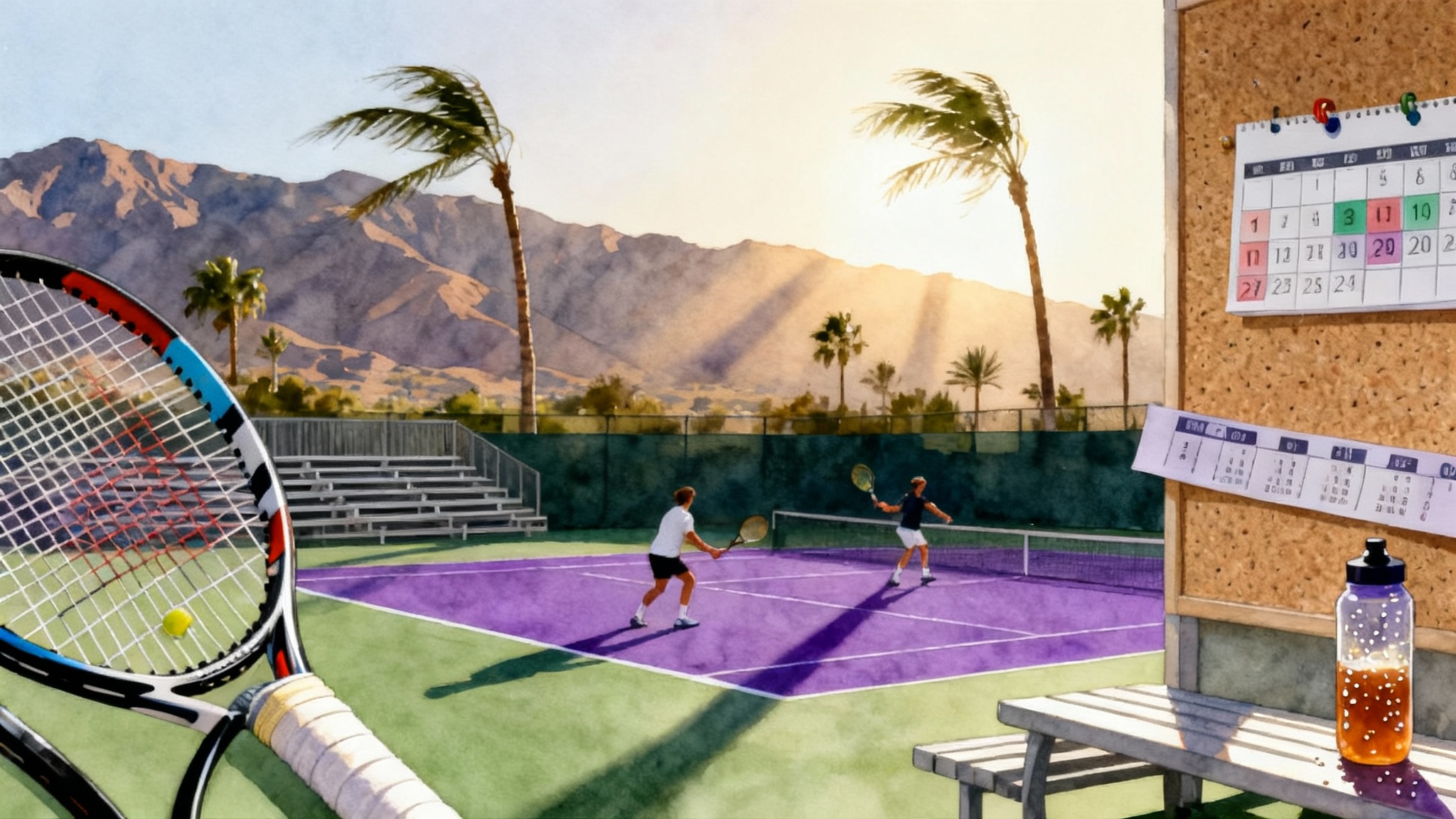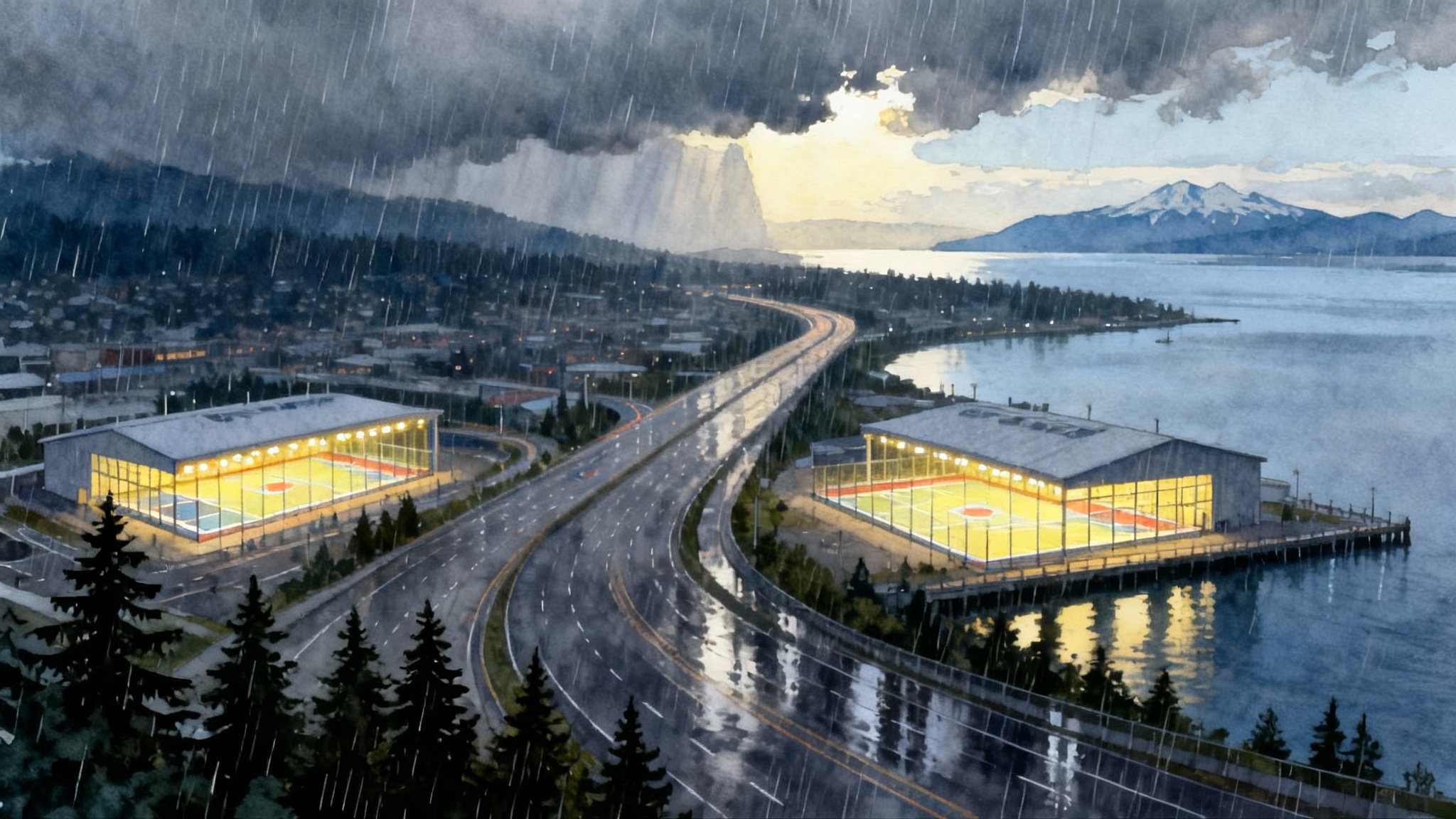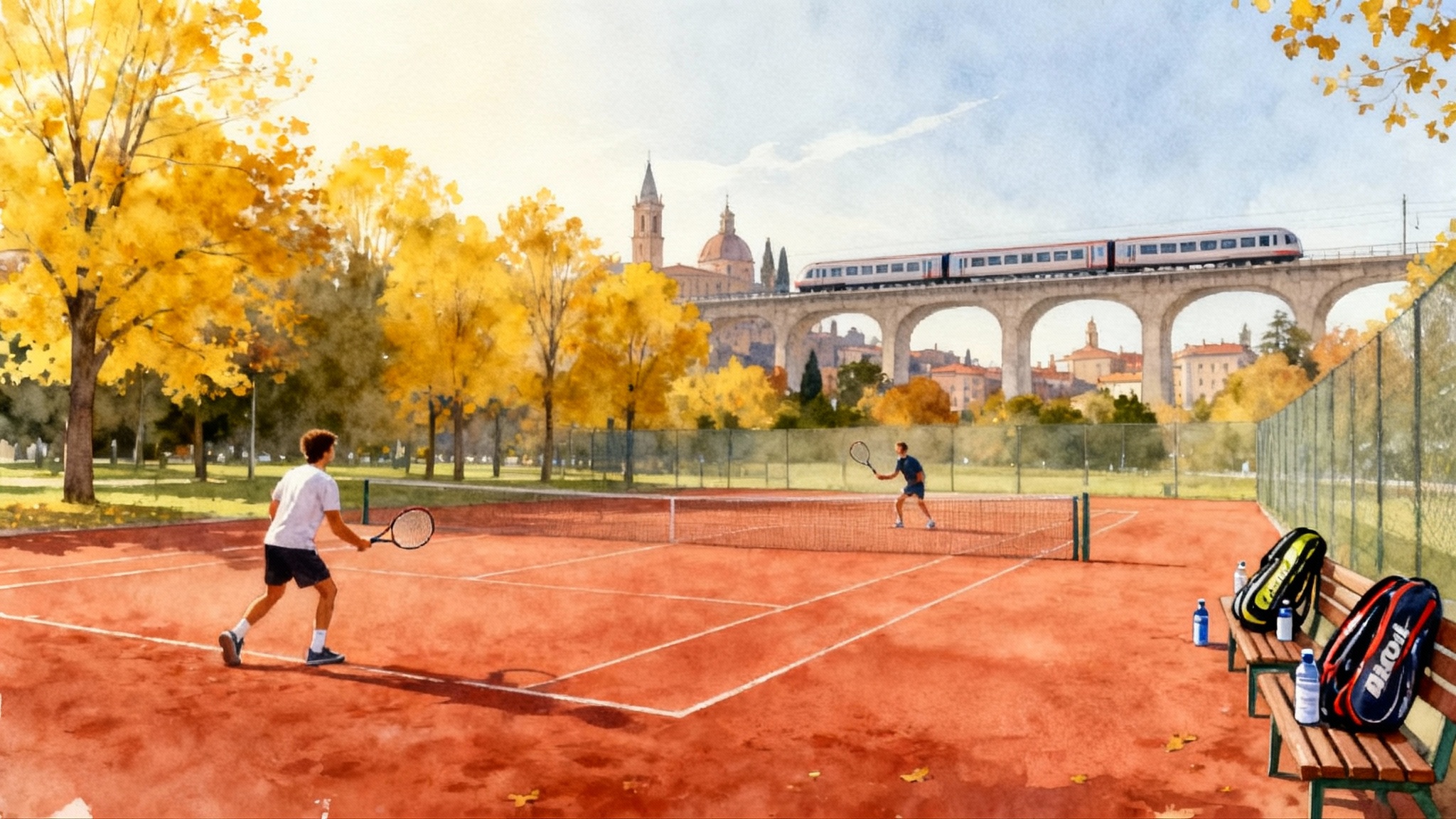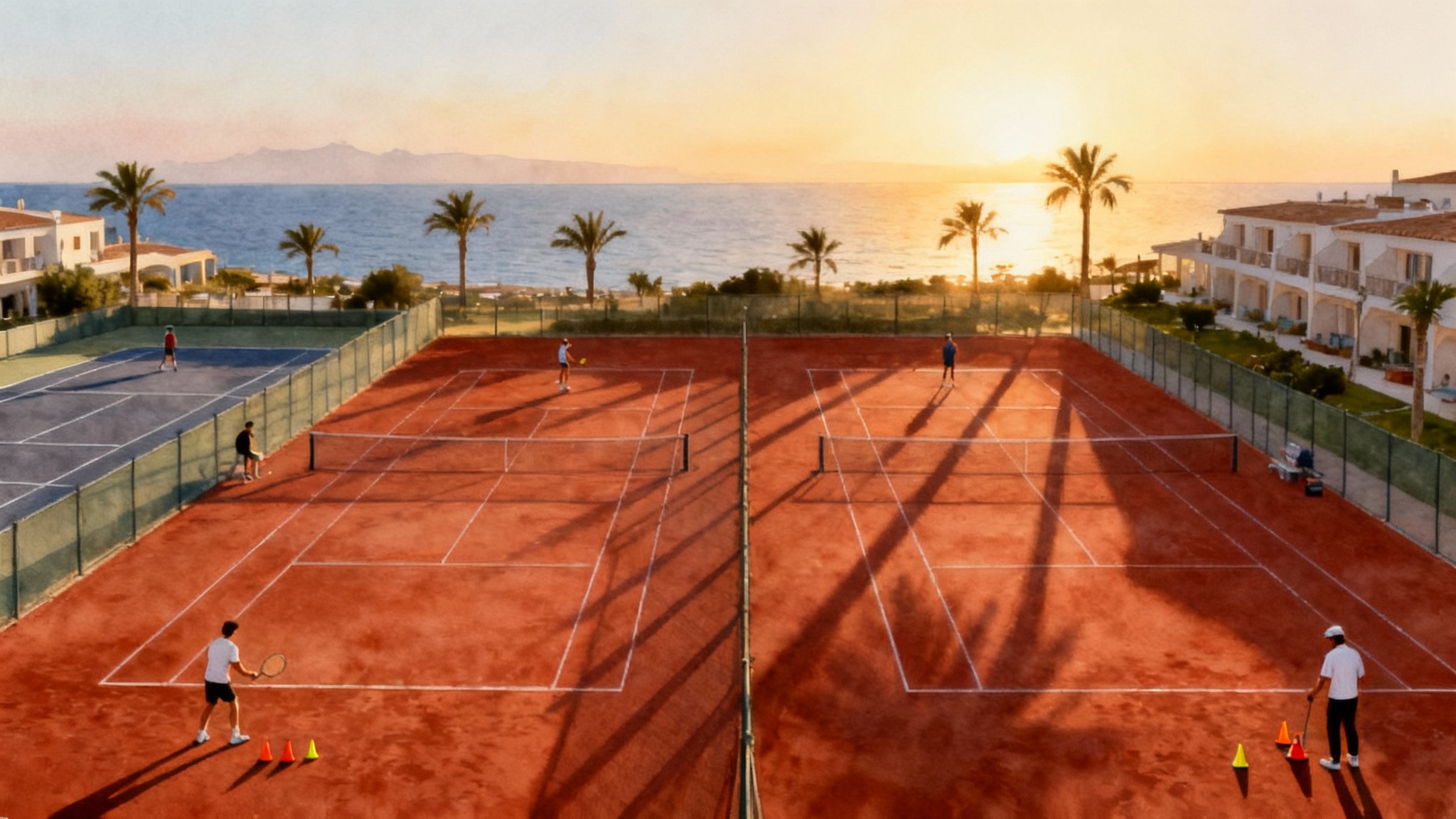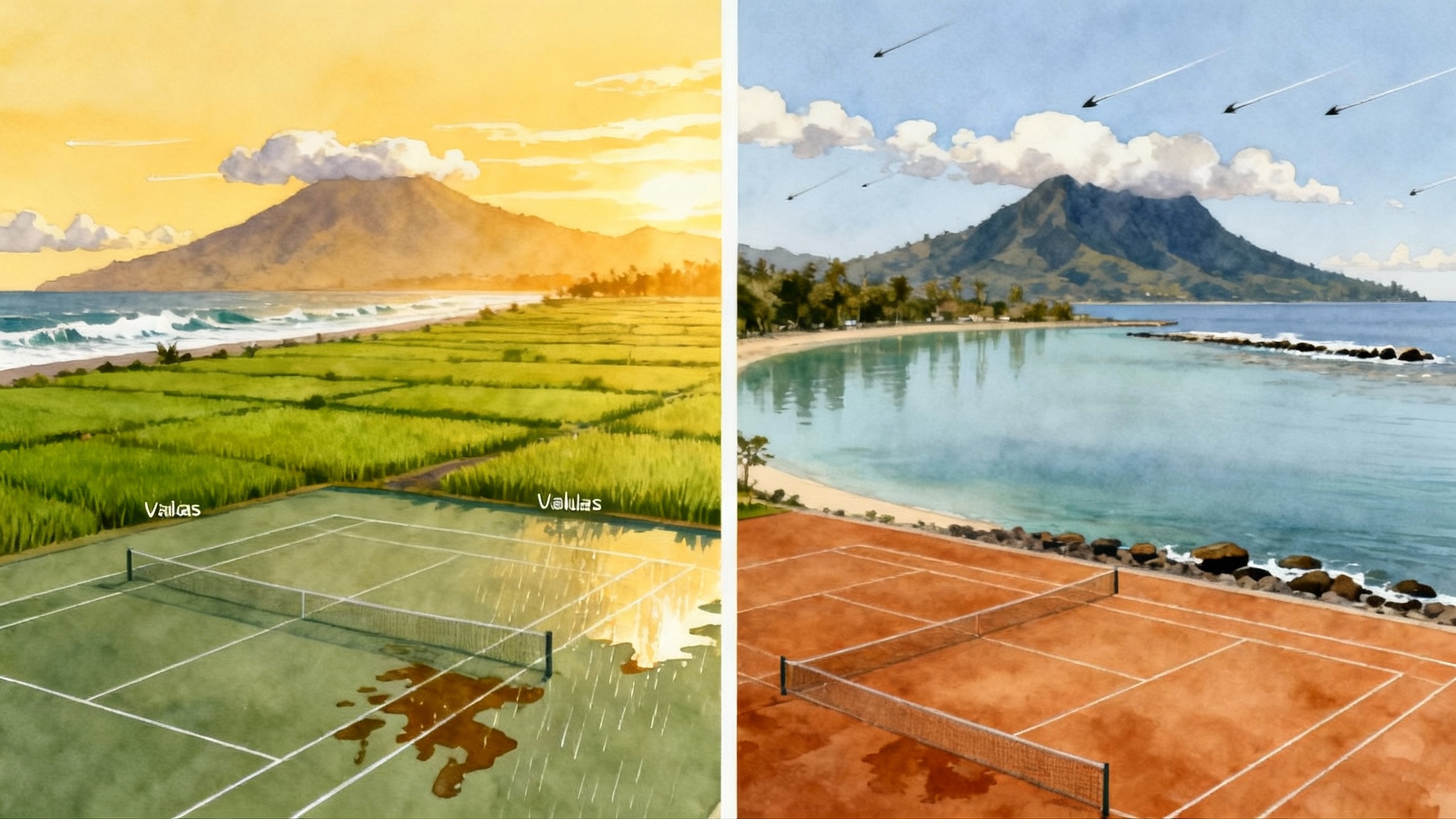Doha Winter Tennis 2025–26: Science-Led Blocks at Aspire Academy
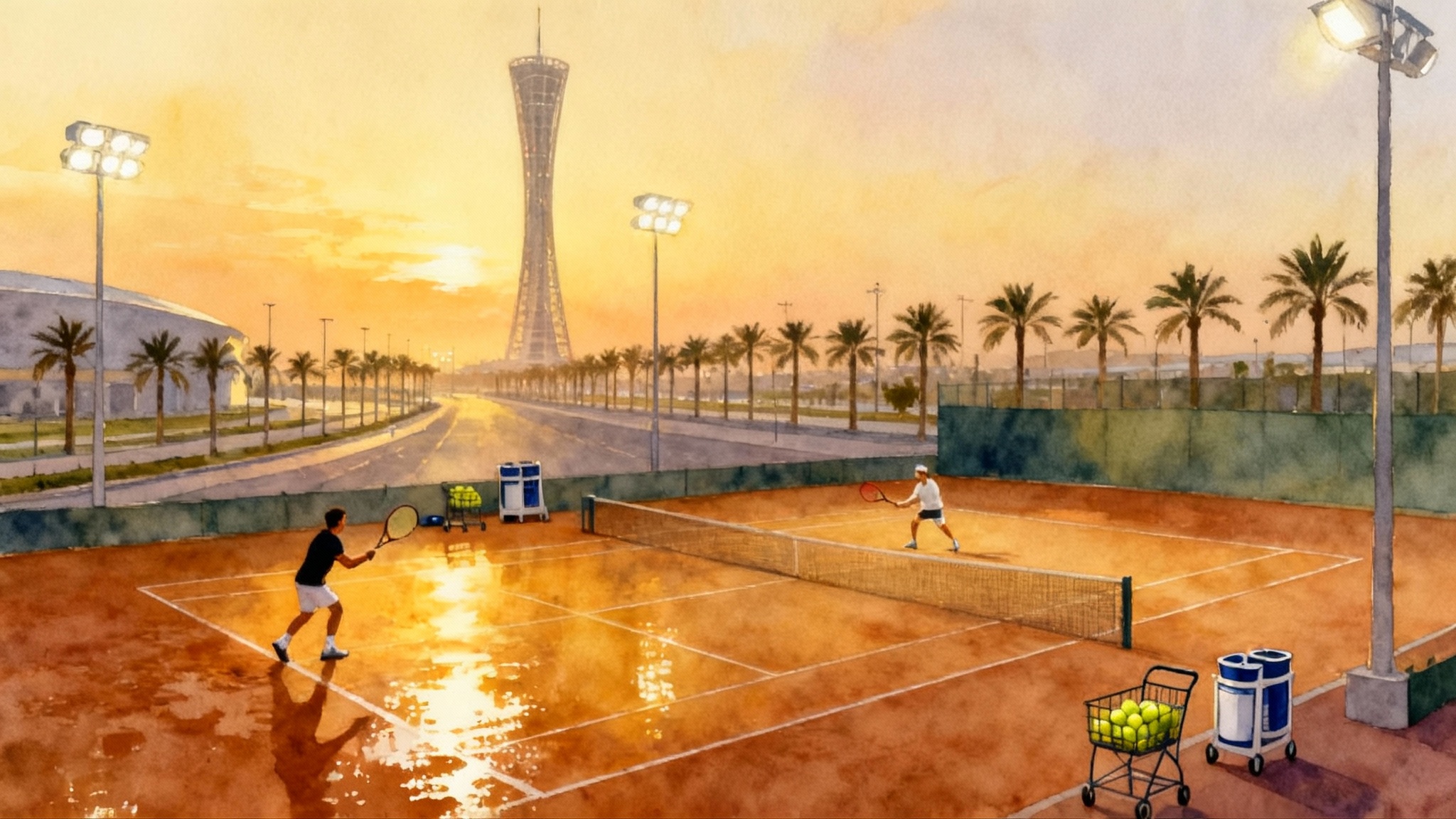
Why Doha from November to March
Doha’s winter window, November through March, offers what tennis players want most in a build phase: dependable outdoor hitting on quality hard courts, cool to warm evenings, and a dense ecosystem of performance services in one small radius. The city’s sports district is anchored by Aspire Academy and the Aspire Zone, a cluster of world-class facilities, sports-medicine clinics, and hotels, with the Khalifa International Tennis and Squash Complex just a short drive away. For teams and individuals who value precise planning, the combination feels like an outdoor laboratory.
If you have trained in Florida or Southern Spain, think similar sunshine but with a denser performance infrastructure in a single neighborhood. Mornings are best for gym and testing, midafternoons are reserved for recovery and video, and the evening becomes the main on-court session when humidity drops and court temperatures are friendlier. That cadence is the backbone of the block plans below.
The Aspire Academy ecosystem you can tap
Aspire is known for applying sport science in daily training, not only for Olympic sports but for ball sports that need repeat sprint ability, tactical decision making, and injury resilience. The value for tennis is simple. You can measure, you can adjust, and you can retest without leaving the district. Learn more through the official site for Aspire Academy sports science. For programs, boarding, and location fit, see our profile of Aspire Academy in Qatar.
What this means in practice:
- Movement and load profiling: indoor sprint lanes, force plates, timing gates, and motion capture help you quantify acceleration, deceleration, and change of direction. These are the building blocks of defense-to-offense transitions on hard courts and the foundations of future clay-footwork efficiency.
- Conditioning with purpose: environmental control spaces and track access allow repeat sprint sets and aerobic intervals that match match-play heart rate patterns. Cyclists talk about training zones; tennis players have their own, defined by point length and recovery between points.
- Injury risk management: strength coaches and physiotherapists collaborate on tendinopathy prevention, lumbar loading strategies, and shoulder integrity. For tennis, eccentric calf and adductor work, scapular control, and rotational core are nonnegotiable.
- Recovery in layers: hydrotherapy, compression, and soft tissue work are scheduled like sessions, not afterthoughts. Simple changes in timing and order move the needle on perceived readiness.
You do not need to buy every service to benefit. The real advantage is proximity. If your coach wants to tweak your serve load after a force-velocity profile, the next-day session is a three-minute walk away.
Where you hit: off-site courts at the Khalifa complex
Daily court time runs at the Khalifa International Tennis Complex, home venue for major ATP and WTA events. The complex offers tournament-grade hard courts, consistent lighting for evening work, and enough capacity to schedule back-to-back squads.
- Court booking: for team blocks, secure two to four courts in the same pod to streamline balls, baskets, and radios. Confirm lighting hours during event weeks and plan around them.
- Ball management: rotate fresh balls every two to three sessions for top squads, every four to five for hitting-only groups. Account for a slightly faster felt breakdown in humid nights.
- Travel time from Aspire Zone: budget 10 to 20 minutes by van off peak, add a buffer if you are crossing around national event times.
Train by the clock, not the thermometer
Doha winter evenings are the sweet spot. Daytime peaks can still feel warm because of solar load on court surfaces, while humidity varies with light coastal breezes. Schedule the main on-court block after sunset and place high neural or technical skills early in that window.
- Morning, 08:00 to 10:00: gym plus movement quality. Keep the session cool and precise.
- Midday, 12:00 to 15:00: recovery, soft tissue, and video. Include a short tactical meeting.
- Evening, 17:30 to 20:30: main tennis load with constrained drills and live points.
This rhythm keeps lifting and analytics in controlled conditions and puts stroke work into the most playable air.
Three proven block plans: 7, 14, and 21 days
Below are sample blocks you can lift and drop into your calendar. Each plan assumes access to Aspire performance support for testing and recovery and court time at the Khalifa complex.
7-day “reset and recalibrate” block
Audience: adult league teams between seasons, juniors coming off a rest week, pros between events who need a tune-up.
Goal: sharpen movement patterns, stabilize serve mechanics, re-establish match fitness.
- Day 1: Baseline testing. Countermovement jump on force plates, 5-0-5 change-of-direction test, grip strength. Submax aerobic test on a bike or track. Evening 90-minute skills session, low volume, high precision.
- Day 2: Lower body strength and deceleration mechanics in the morning. Evening two-hour live ball plus serve accuracy games. Recovery pool after dinner.
- Day 3: Aerobic intervals, 8 by 3 minutes at controlled heart rate with two-minute easy jogs. Evening patterning on second-ball offense and neutral tolerance.
- Day 4: Regeneration. Mobility, soft tissue, light hit capped at 45 minutes, no points. Optional cultural visit to keep legs moving.
- Day 5: Speed emphasis. 10- and 20-meter accelerations with timing gates, then on-court first-step drills and mid-court pressure patterns. Evening set play with constraints.
- Day 6: Serve and return day. Morning rotator cuff and scapular control. Evening serve sequencing, return depth ladders, tiebreak sets.
- Day 7: Retest key markers, short team event, and travel prep.
14-day “build and blend” block
Audience: national juniors, college squads on winter break, adult performance teams that want a fitness and skills blend.
Goal: lift aerobic base and repeat sprint capacity while embedding two tactical themes.
Structure: two microcycles of six training days plus one recovery day.
- Days 1 to 3: Microcycle A
- Morning: strength two days, mobility and coordination one day.
- Evening: theme 1, build the point patterns. Two technical nights and one live night.
- Condition: short high-intensity intervals after tennis on one day only.
- Day 4: Recovery and education. Sleep talk, hydration strategy, match video.
- Days 5 to 7: Microcycle A continued
- Morning: speed and footwork, include curve sprints and shuffle-to-crossover drills.
- Evening: theme 2, neutral-to-offense from the backhand half. One night of competitive sets.
- Days 8 to 10: Microcycle B
- Slightly higher strength volume, maintain bar speed. Tennis volume trimmed by 10 percent to maintain quality.
- Day 11: Recovery, light hit, and retest key outputs.
- Days 12 to 14: Sharpening and match play. Finish with a mini-match series and debrief.
21-day “prepare to peak” block
Audience: juniors targeting a spring European clay swing, adult national teams building toward April team events, pros setting a base before a travel-heavy patch.
Goal: periodized build that climbs, consolidates, and sharpens.
- Week 1, Foundation: technique density and strength fundamentals. Three evening skills blocks, one live night, one serve and return lab. Two full-body lifts with eccentric lower body and rotational core.
- Week 2, Capacity: raise on-court volume and repeat sprint ability. Two conditioning add-ons after tennis, one aerobic builder on the track. Tactical theme consolidation with situational points.
- Week 3, Specificity: volume drops by 15 to 25 percent, intensity stays high. More set play, match simulation with scoring pressure, and targeted serve patterns. Taper strength to power, keep bar speed high and reps low.
Build in two recovery afternoons per week. Use those windows for hydrotherapy, soft tissue, and a 20-minute nap.
Testing that guides training
You can run a smart block with a simple testing menu. The key is to repeat the same measures at the same time of day in the same state.
- Countermovement jump: track takeoff velocity and flight time. Low cost, high signal for neuromuscular readiness.
- 5-0-5 change of direction: captures decel and reaccel symmetry. Do not chase world records; use it to see improvement.
- On-court repeated sprint test: six to eight 20-meter shuttles with short rest. Pair heart rate data from a chest strap like Polar H10 with perceived exertion.
- Serve speed and spin: a portable radar and a sensor can show if power drops as volume rises. If spin falls faster than speed, target forearm endurance and shoulder stability.
- Hydration and sodium: weigh in and out on heavy sessions, track fluid and sodium intake, and adjust your plan. A simple scale plus a logbook often beats fancy tools.
If you have access to advanced tools at Aspire, add force plate asymmetry, bar velocity tracking for power lifts, and submaximal lactate points. Use small deltas to shape the next day’s load.
Recovery that athletes actually do
Recovery has to be achievable and scheduled. In Doha you have access to hydrotherapy pools and quality manual therapy, but the basics make the biggest difference.
- Sleep first: set rooms at cool temperatures, block light, and use the same pre-sleep routine every night.
- Cold and contrast: plan short, repeatable exposures rather than heroic plunges. Track how you feel next day, not just how cold the water is.
- Compression and mobility: 20 minutes of light compression after evening sessions, then 15 minutes of mobility before bed.
- Skin and feet: humid nights and frequent showers dry skin. Use a simple foot care routine and change socks between sessions.
Logistics from the United States and Europe
Doha sits in time zone UTC plus 3. That means an eight-hour jump from United States Eastern Time in winter, three hours from London, and two hours from Central Europe.
- Flights: Qatar Airways runs long-haul routes into Hamad International Airport with direct options from New York and seasonal options from other United States gateways. From London and Paris, flight times are often six to seven hours. From the West Coast, plan a one-stop itinerary.
- Jet lag plan: eastbound travel from the United States benefits from gradual sleep advance for two to three nights pre-departure. Land, hydrate, walk in daylight, and keep the first evening hit to 60 to 75 minutes of feel and rhythm.
- Ground transport: Aspire Zone sits roughly 25 to 30 minutes by car from the airport outside peak traffic. For squads, use a single van provider for the entire block and book the same drivers.
- Accommodation: hotels within the Aspire Zone or nearby business districts cut commuting and allow midday recovery breaks. Apartment hotels help with meal prep for teams.
- Entry requirements: many nationalities receive visa waivers or visas on arrival. Check official guidance close to departure and travel with adequate passport validity and insurance.
Cost and experience: Doha vs Dubai vs Abu Dhabi
Budget is more than nightly rates. It is the sum of court time, ground transport, strength and recovery services, and the convenience tax of traffic and distance.
- Court time: in all three cities you are paying for tournament-grade hard courts with lights. Doha’s Khalifa complex offers high-quality surfaces with a more compact commute for Aspire-based teams. Dubai and Abu Dhabi have excellent facilities too, but hitting at popular beachfront or island locations often adds travel time and parking costs.
- Hotels and food: winter is peak season across the Gulf. Doha properties near Aspire tend to price below the top Dubai beachfront clusters and Yas Island’s event weeks. If you value quiet, the Aspire area is stable and businesslike. If you value entertainment between sessions, Dubai and Abu Dhabi offer more attractions at the cost of higher temptation to overdo the off-court time.
- Services: access to integrated testing, physio, and hydrotherapy inside one zone in Doha can reduce time and dollars lost to crosstown trips. In Dubai and Abu Dhabi you can build the same stack, but it usually means stitching together providers.
If cost is the tiebreaker, teams that base close to Aspire often find total spend comparable to or lower than a beachfront Dubai base once you include transport and time costs. If experience beyond tennis is the priority, Dubai and Abu Dhabi offer more nightlife and tourist variety. Choose the environment that supports the goal of the block.
A pre-European-clay periodization template
Many players use Doha to prepare for the European clay season that begins in April and May. The goal is to keep the movement quality of hard courts while building the patience and elasticity needed for clay. If you plan to stage in Spain next, scan our Barcelona training hub guide and pair it with Parma clay training.
- Movement: teach hip-led direction changes, longer braking steps, and relaxed torso rotation. Use slide boards and controlled decel drills rather than forced sliding on abrasive hard courts.
- Patterns: expand rally tolerance and width. Train deep crosscourt to short line changes, and make drop shot plus lob sequences a daily finisher.
- Serve and return: raise second-serve spin and kick height while keeping first-serve locations honest. Returns must clear the service line and land heavy.
- Conditioning: shift from pure repeat sprint toward longer repeat efforts. Use four-minute point construction games, with defined recovery, to mimic clay rallies.
- Mental: clay multiplies decisions. Add scoring pressure layers such as one-ball free points for depth targets or bonus scoring for successful change-of-direction patterns.
Juniors, 14 to 18
- Weekly structure: two full-body lifts, one mobility and coordination day, four evening hits, two live set nights.
- Volume: 12 to 14 hours of tennis plus 5 to 6 hours of physical work per week.
- Testing focus: jump outputs, 5-0-5 symmetry, heart rate recovery. Keep the dashboard simple and reinforce habits.
Adult teams and advanced league players
- Weekly structure: two strength sessions with power emphasis, three skills nights, two competitive nights, one recovery day with a short feel hit.
- Volume: 9 to 11 hours of tennis plus 3 to 4 hours of physical work per week.
- Testing focus: readiness, soreness survey, and serve velocity with fatigue. Protect shoulders and maintain adductor strength.
A day that works in Doha
Here is a simple template you can adopt on arrival and keep for the block.
- 07:15 wake, hydration, light walk
- 08:00 to 09:30 gym, movement, and prehab
- 10:00 breakfast, recovery snack
- 12:00 to 13:30 recovery window, hydro or compression, soft tissue
- 14:00 video and tactics, team meeting
- 16:30 snack and activation, van to courts
- 17:30 to 19:30 main hit, theme of the day, short live sets
- 19:45 cool down, protein plus carbs
- 21:30 lights out and screens off
Small details matter. Keep a shared whiteboard or digital doc for each player’s serving volume, high-speed running meters, and soreness notes. If a player accumulates more than 20 percent above their weekly average in any load metric, pull volume from the next session, not intensity.
Packing and planning checklist
- Racquets, two string setups, one for speed and one for spin retention on humid nights
- Grips and tape, plan for faster turnover in evening humidity
- Chest strap heart rate monitor, a small scale for team weigh-ins on heavy days
- Mobility tools, a foot care kit, blister pads
- Lightweight sun layers, hat, and a breathable warm layer for breezy nights
- Electrolyte plan with measured sodium per liter, not just a flavored drink
- Power adapters, recovery boots if the team already uses them, and a small massage gun
- Shared drive with practice plans, testing sheets, and a nightly checklist
Putting it all together
A great block is not a string of long sessions. It is a clear story that links testing, training, and recovery to the match style you want in April. Doha from November to March gives you that story in one compact zone. Aspire Academy brings the science to your doorstep, the Khalifa courts give you world-class surfaces under lights, and the city’s logistics are simple enough that the plan survives contact with real life. Pick your window, book the courts, schedule your evenings, and let the data guide the daily tweaks. When you land in Europe for the first clay events, you will bring a calmer engine, cleaner movement, and the quiet confidence that comes from a plan you executed well.
